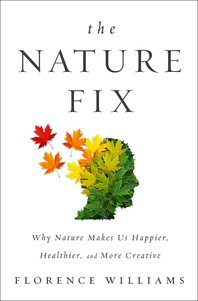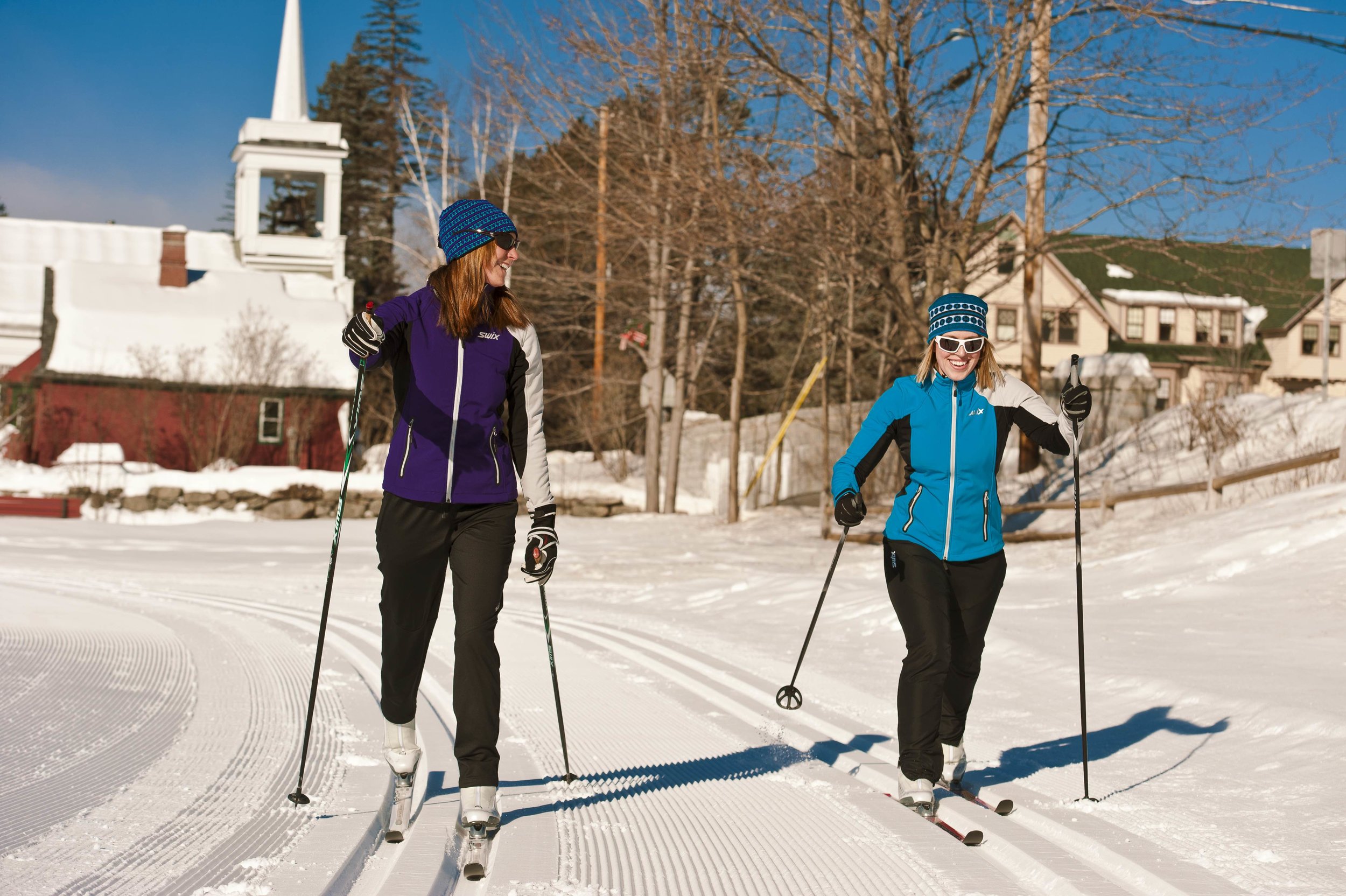The Nature Fix by Florence Williams published by W.W. Norton & Company in 2017 provides the most compelling argument to date for people to spend more time outdoors in nature, based on an increasing amount of biological, psychological, and medicinal scientific evidence.
Over the years, efforts have been made to quantify nature’s impact on mood, well being, ability to think (remember, plan, create) and sociability. The biophilic hypothesis involves lowering human stress, boosting mental health, restoring attention, empathy, and cognitive clarity. Nature also effects a social component like the feeling that is shared among people who spend time together outdoors or people who perform exceeding acts of kindness in the aftermath of a severe environmental event such as a tornado, earthquake, firestorm, and such.
Williams passes along a recommended prescription for getting outdoors that frankly, all doctors should suggest to all of their patients. This so-called “nature pyramid” includes quick doses and longer spells in wild places. Specifically, humans should:
get out in nature nearby on a daily basis for some minutes to destress, find focus and lighten mental fatigue,
spend weekly outings at parks or waterways for an hour or so, and
go on monthly weekend excursions to natural areas to bolster immune systems.
The top of the pyramid would include yearly or biyearly wilderness multi-day trips. More significantly, such wilderness experiences are invaluable for adolescents or following grief or trauma.
Morning ski on trails at Jackson, NH
The author traveled the world over to investigate and experience research on nature’s impact on humans. In Japan she saw “forest bathing” on a sensory walk in the woods on one of the 48 forest therapy trails in the country. In Scotland they call it “eco therapy.” In 2008, Richard Louv coined the infliction “nature deficit disorder” in his book “Last Child in the Woods” and he called for getting kids into the outdoors more often. The leading cause of the decline of kids getting outdoors interestingly is parent concern about stranger danger more than their kids' addiction to technology screens!
The evidence (20 pages of cited notes and credits) about nature impact involves details with cortisol levels, sympathetic nerve activity, heart rate decline, and hemoglobin in the brain’s prefrontal cortex. The book is replete with that type of information, but obviously the average person may not be very familiar with such neurological details.
In South Korea, Williams learned of antibacterial compounds associated with soil and the smell in nature known as photoncides, pinene, and turpene. She met with a Korean professor of “social forestry” who introduced her to the world’s only college degree for forest healing. In South Korea from 2010-2013, visits to the forest increased from 9.4 million to 12.7 million, while in the USA there was a decline of 25% during the same time period.
Mascoma Lake, Enfield, NH
One of nature’s benefits are delivered through sound – a bubbling brook, bird tweets in the early morning, the leaves moving in the wind, and so on. But the US Park Service claims that 83% of land in the lower 48 states sits within 3,500 feet of a road and that within 20 years 90% of the population will be close enough to hear at least one of the projected 30,000 airplane flights per day…let alone noise associated with auto and truck traffic, lawnmowers, leaf blowers, etc. In Seoul, South Korea, $380 million was spent to create a 3-mile, 20-foot wide creek with water, shrubs, and trees to address the urban soundscape and provide a nature corridor within the city.
Williams cites studies of the positive effect of windows in schools, offices, and housing on productivity, stress, higher academic test scores and grades, and lower levels of aggression. In Finland, 95% of the population spends time recreating outdoors and 50% ride bicycles and it is easy to access forests because 74% of the country is covered by trees. There are 2 million summer cottages for a population of 5 million Finns. And the Finns correlate this focus on nature to reduced health care costs and improved mental health and physical fitness. The Finnish prescription to get in nature is a minimum of 5-10 hours a month, 30 minutes on 5 days per week, or 2-3 days outside the city per month.
Scotland has a National Walking Strategy incorporating government guidelines for what it calls the “Dear Green Place” with a goal of having access to safe woodlands within 500 meters of people’s doorsteps. A 12-week Scottish outdoor program called Branching Out is intended to provide better mental health for 3 hours per week to reduce symptoms of depression, increase sociability, physical exercise, and self-esteem. This is adventure therapy and in a test of 700 participants who were former depressives, addicts, or petty criminals more than 70% went on to find permanent employment.
A study at Stanford University showed that getting out in nature can impact rumination, where we replay unpleasant thoughts over and over. Rumination is linked to anxiety and depression and the brain portion that is impacted is the subgenual prefrontal cortex, which is generally linked to sadness, withdrawal, and grumpiness.
Williams visited Singapore, which practices “urban naturizing” where half of the 276 square miles of the city have some type of green cover so that some say it is a “city in a garden.” Seventy percent of the population in Singapore lives within 400 meters of green space. The government in Singapore allocates .6% of the national budget to develop scenery and greenery.
Mountain biking at Sleepy Hollow Inn
There are successful nature programs to help people who suffer with PTSD (post-traumatic stress disorder) and ADHD (attention deficit hyperactivity disorder). While some agencies do not recognize wilderness programs as a legitimate healing tool, Outward Bound did a study on a therapeutic adventure program showing 9-19% of participating veterans who had PTSD, improved. Williams includes a discussion about ADHD programs where 6.4 million kids are diagnosed and half of them are taking medication for the malady. The digital age is profoundly narrowing our horizons and physiological capabilities but ADHD may have existed and been an unknown issue before electronics. Famous people such as Mark Twain, Ansel Adams, John Muir, and Frederick Law Olmsted all had problems at school but they found enough relief out in nature to become luminaries in their fields (all related to nature).
Speaking of school, Williams discusses education outdoors stating that Frederick Frobel created the concept of “kindergarten” (children in the garden?) in 1837 so that kids can absorb the natural world through their senses. Over the years more indoors activity and academic work had been incorporated into kindergarten education. American students are outdoors less frequently and the National Trust Report showed that outdoor activities declined 15% among 6-12 year olds between 2006-2014 and the radius of activity around the home where kids can play declined by nearly 90%. But on a positive note, there are an increasing number of elementary schools that are incorporating “Forest Friday” type programs into the weekly activities.
Lupine field in the White Mountains of New Hampshire
Today many Americans feel they do not have enough time on a daily basis and this “time famine” can have a huge impact on mental and physical health, life satisfaction, depression, hypertension, and headaches. To address the decline of time outdoors, there are programs such as Richard Louv’s “Children & Nature Network,” the Nature Conservancy’s “Human Dimensions” program, and the National Park Service’s “Healthy Parks, Healthy People.”
A therapist in Minneapolis gives her clients the option to take their therapy sessions while walking outside at a park that is a block from her office. Tammie Rosenbloom of Minnetonka Counseling is the practitioner who says she gives the same treatment while walking or in the office, but she’s noticed during the walking therapy that her understanding of the clients is enhanced. “It’s meditative to walk and it’s a rhythm.” In the winter, she uses handwarmers and offers them to the clients. She also says she’s willing to participate in activities such as cross country skiing or paddleboarding during sessions with clients. Isn’t it about time that more therapists, doctors, teachers, and parents prescribe getting outdoors more often?





